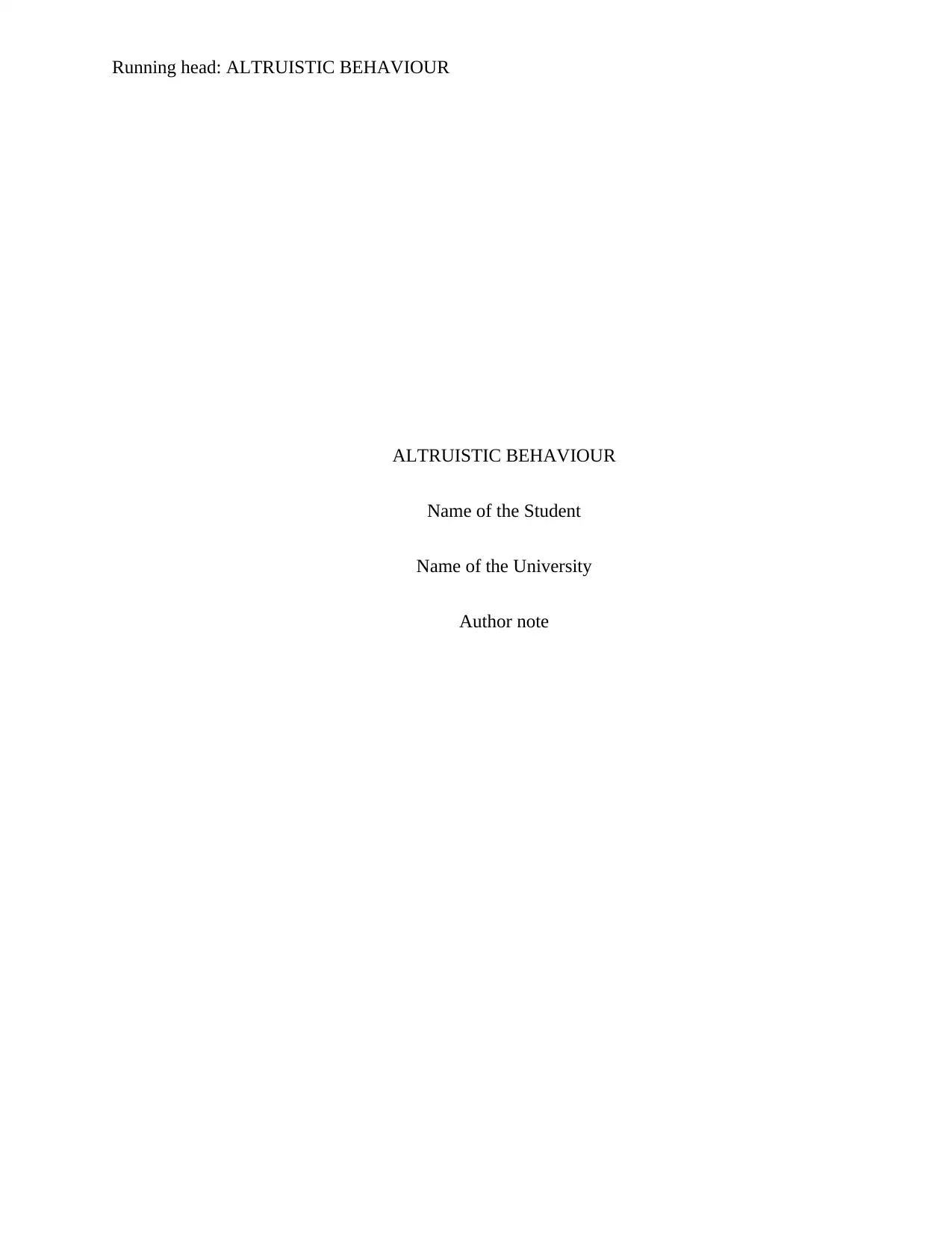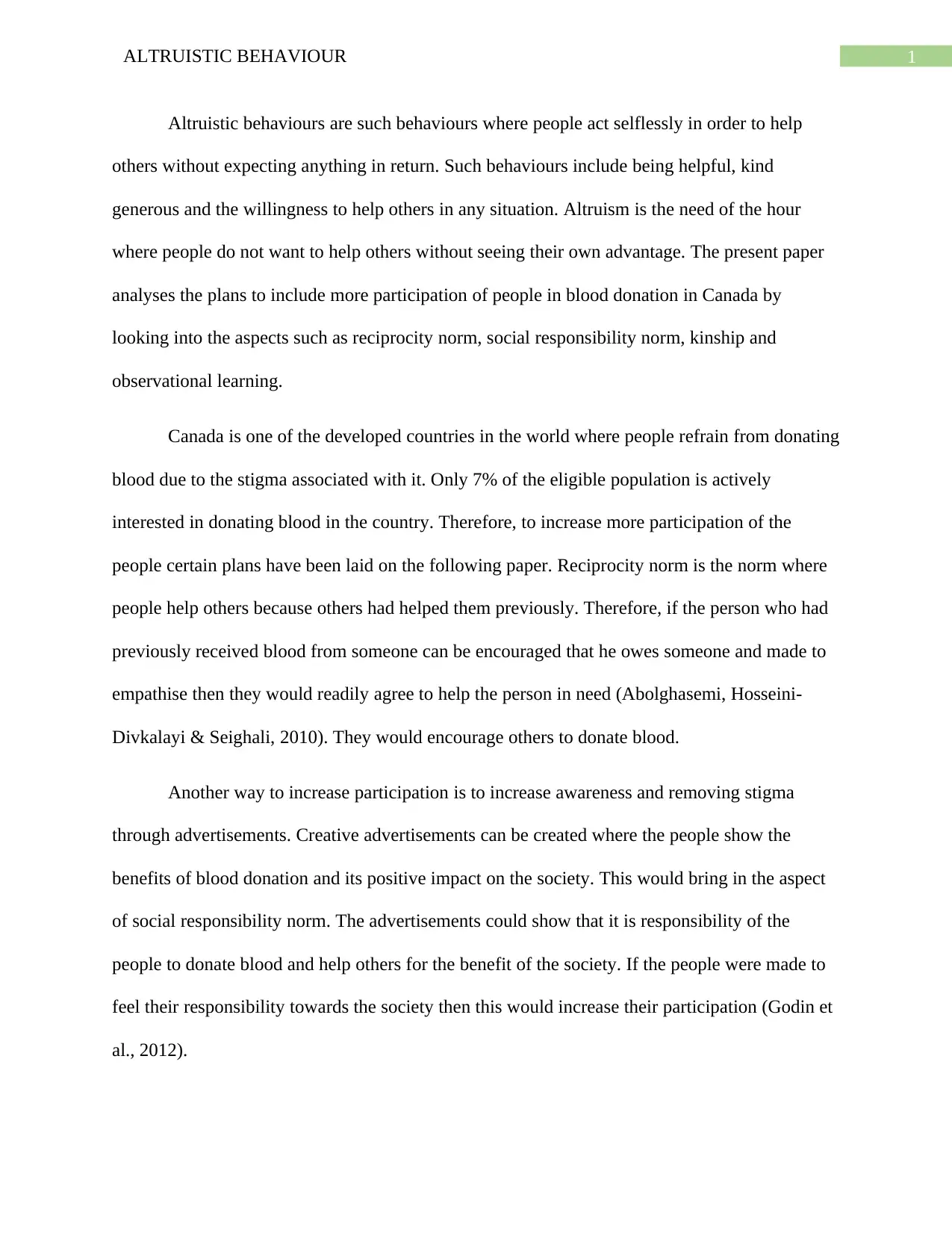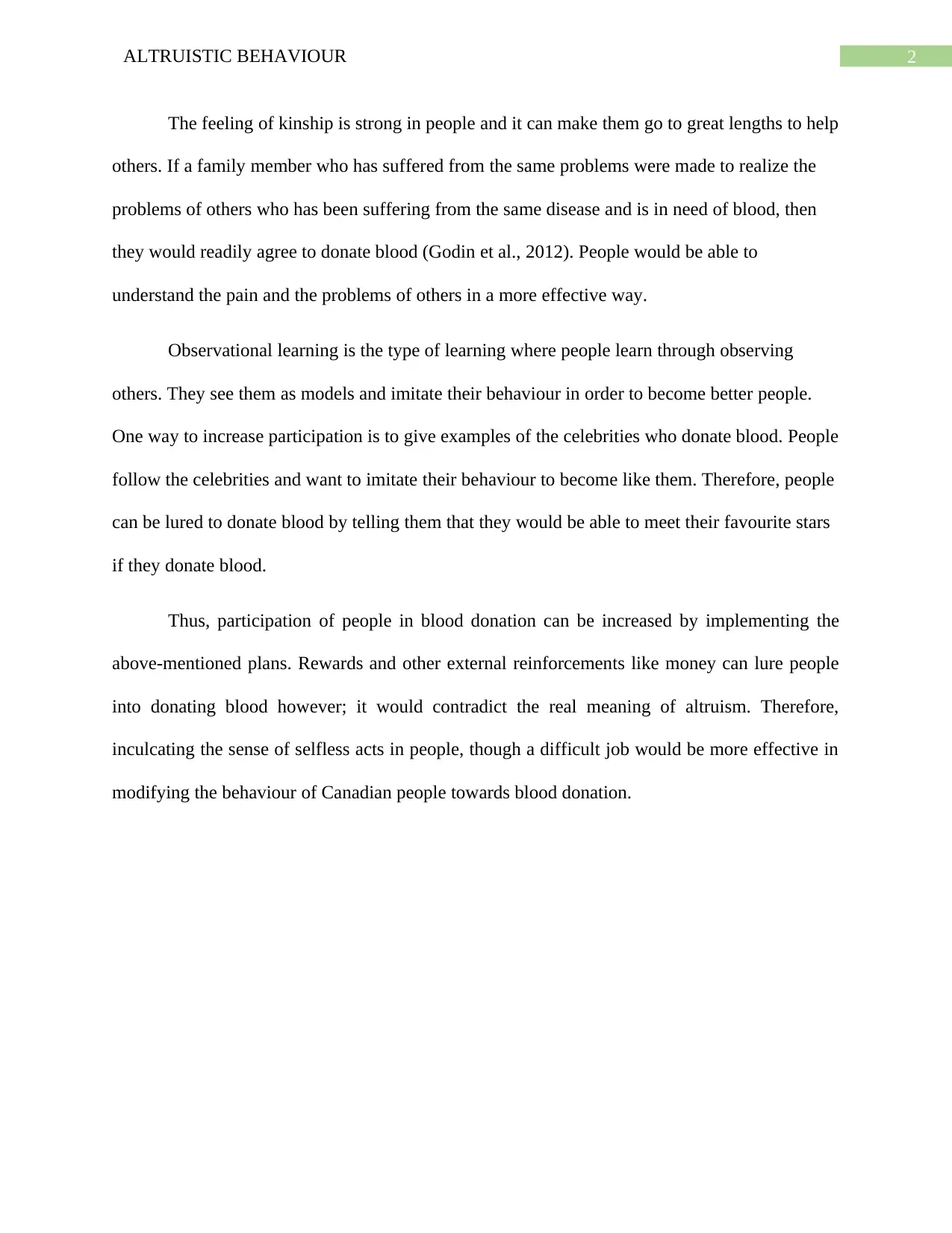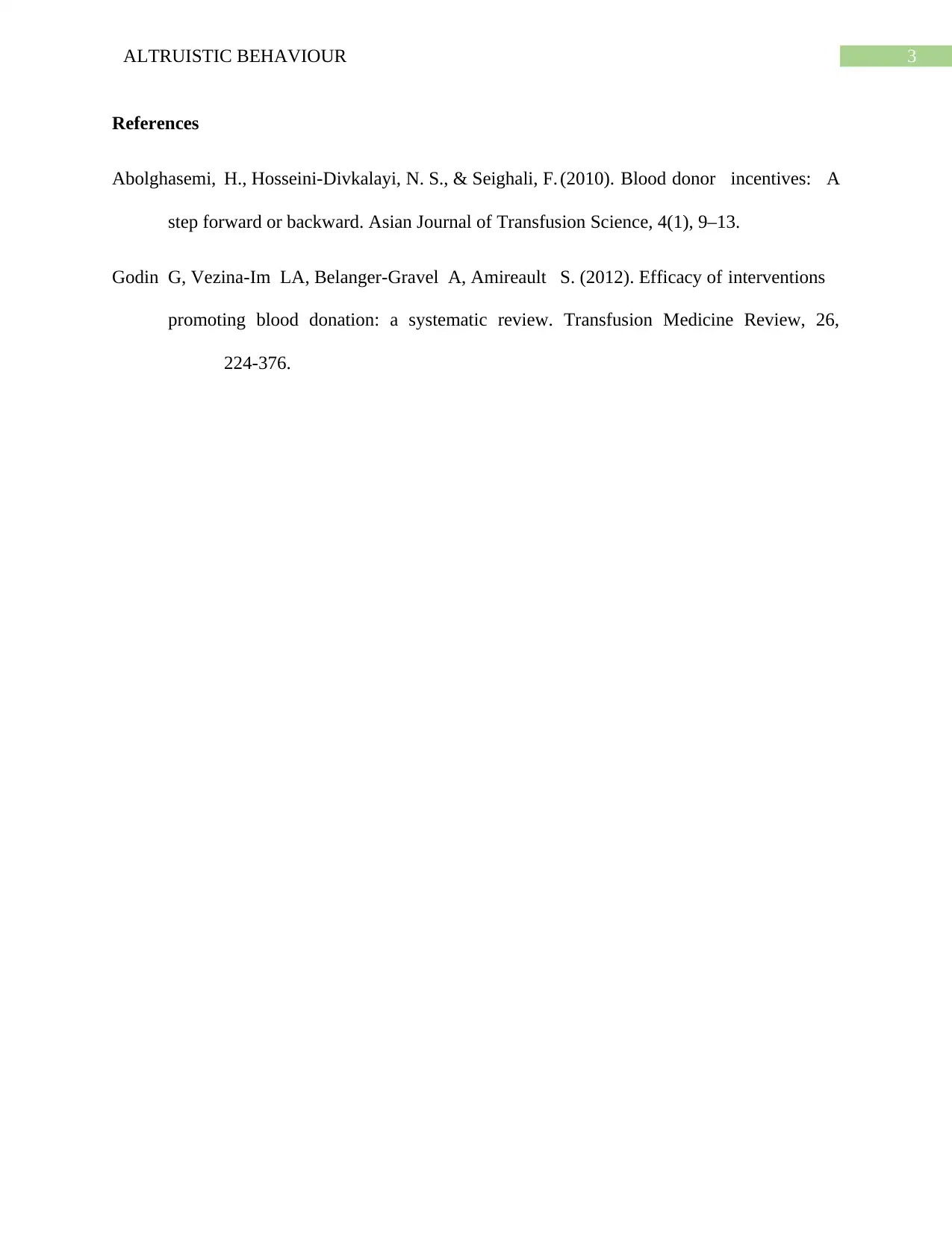University of Toronto: PSYC1010 Altruistic Behaviour Report
VerifiedAdded on 2022/08/20
|4
|668
|17
Report
AI Summary
This report analyzes altruistic behavior, specifically focusing on increasing blood donation rates in Canada, where only 7% of the eligible population donates blood. The paper explores various psychological principles to increase participation, including the reciprocity norm (encouraging those who have received blood to donate), social responsibility norm (emphasizing the societal benefits of donation), kinship (appealing to family ties), and observational learning (using celebrity endorsements). The report highlights the low blood donation rates in Canada and proposes strategies to increase them, such as creative advertisements, raising awareness, and leveraging social influence. It also differentiates between altruistic acts and external reinforcements like money, emphasizing the importance of fostering genuine selfless behavior in the Canadian population to improve blood donation rates.
1 out of 4









![[object Object]](/_next/static/media/star-bottom.7253800d.svg)